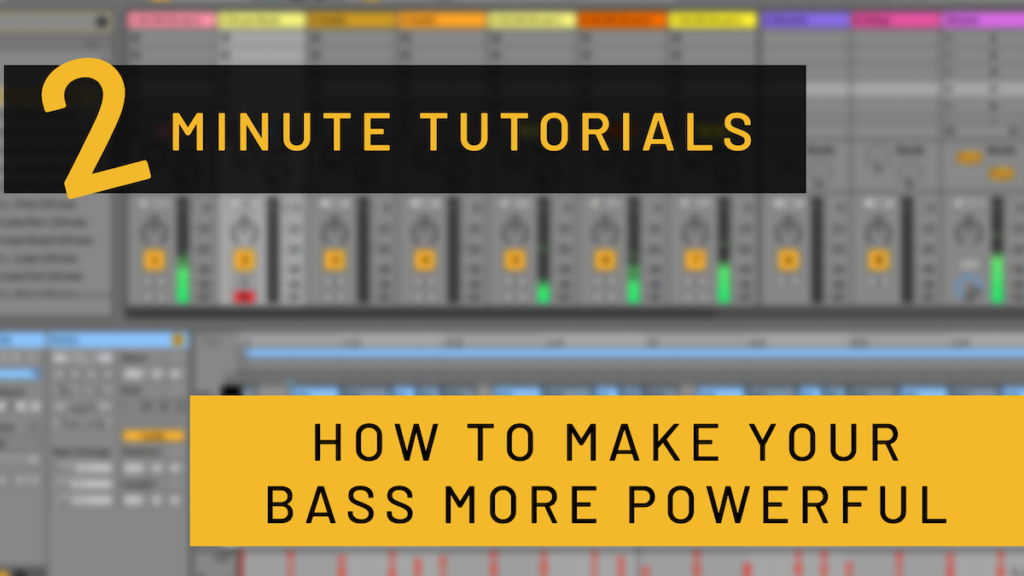Improve the Quality of Your Mix
We’ve all been there before: spending hours in the studio working on a track only to be disappointed with its quality. So we keep working on the mix, but the more tweaking the worse it sounds. This can be extremely frustrating and demotivating. Before giving up on the track, consider the following reasons why your mixes are losing quality. Making some of these small tweaks can greatly improve the quality of your mix.
Mixing Too Hot
This may not be a term you’ve heard before. “Mixing too hot” simply means you’re maxing out your signal’s headroom. This causes a few major yet easily avoidable issues. If you’re unsure what headroom is, or want to know six simple ways to reduce headroom, I highly recommend checking this out.
Reducing the overall volume and headroom of your mix can instantly relieve your track by giving it the extra room it needs. If you’re mixing too hot, your mix is likely being compressed or limited in some way. Reducing the headroom and giving it extra breathing room can work wonders for a hot mix.
Too Many Overlapping Frequencies
Believe it or not, the absolute best thing you can do for a mix doesn’t have to do with mixing at all. A properly arranged track will almost always be drastically easier to mix. It will also sound better at the end of the mixdown.
The arrangement isn’t just the way you’ve placed your phrases and set up the structure of your song. It has to do with every piece of the musical puzzle that makes up your track. Everything from your basslines, melodies, and drums are part of your arrangement and can be placed in your song with the mix in mind.
Choosing the proper placement and layers of sounds in the frequency spectrum give your instruments their own room. Now you don’t have to rely on heavy EQing to make room for each instrument in the mix.
Better arrangement comes with a lot of practice. Sometimes you have to compromise with your track too. If you have a really solid bassline and a solid melody that interferes heavily with the frequencies and arrangement of that bassline, maybe it’s better to change one of those ideas to accommodate your mix. Some simple ways of achieving this are picking a different note structure, changing the octave of your melody, or to try a different instrument altogether.
You run into potential issues when you have too many instruments playing that surround the same area sonically. The main one being that you have areas of frequencies overlapping, and your mix starts to sound crowded and muddy.
You can fix this with proper EQ, but avoiding an issue altogether is better than attempting to fix it.
Too Much Reverb and Delay
Another common problem is using too much reverb. Setting up your reverb and delay times properly is often overlooked. Adding too much or too long of a reverb can quickly muddy up your mix or make it sound ‘washed out’. When your sounds are drowned in reverb and delay, you can lose direction, clarity, and punchiness.
Here’s a general rule of thumb to follow. Once you think the reverb or delay signal is enough, back it off about 10%. I believe that too little is better than too much when it comes to adding these effects.
Using the wrong FX chain order
Creating a chain of FX in certain ways can cause issues in your mix rather than solve them. It’s advised to run your effects chains in a specific order so you don’t run into these issues.
It’s as simple as making conscious decisions about which way to process your sounds both in serial and parallel.
Take a moment to think about how the effects work with each other or after each other. Of course, there are no rules, but there are common practices that tend to work best for most effects chains. Usually, you would add reverb or delay at the end of your chain so that it is reverberating or delaying the entire signal. A compressor is usually placed after an EQ and not before so that you’re not compressing signals that you are planning on adjusting after. Be mindful and consider how the effects work one after the other and not just one at a time.
Overcompressing sounds
Here’s another way to improve the quality of your mix: working with compression. A compressor works by reducing the dynamic range of a signal. The dynamic range is the distance in volume between the loudest signal and the quietest signal. Of course, it’s beneficial to use compression in a lot of situations. However, an overcompressed signal or mix can really take away from the overall quality of the song.
I’m sure you’ve heard it before, that you have to be careful with compressors. For a lot of producers, it takes a while to understand compressors fully. It takes even longer to have a trained ear to know when something is properly compressed and not just turned up in volume (which will trick your brain into thinking it’s louder).
I would suggest diving in and practicing as much as possible with compression. That way, you can train your ear more and more. Learn the different types of compression and the effects they have. You can learn how compressors work in just two minutes by checking out my Two Minute Tutorial on YouTube here:
When in doubt, compress lightly! This way, you won’t drain the life out of your mix by reducing your dynamics too much. The mastering engineer will let you know if there are any issues while your track is getting mastered. They will either help to fix them or get you to address them.
Putting it Together: Improve the Quality of Your Mix
Take these five reasons into your next mixdown and hopefully, your mix will come out just a little bit cleaner than before.
If you’re looking for more structure and to get some help locating issues with your mixes, I offer personal 1-on-1 video lessons. I work with you to locate areas you require improvement on. Feel free to book a session with me here.






